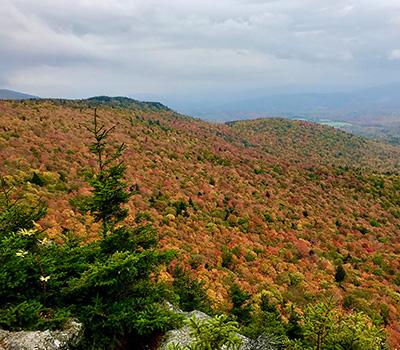Effects of Forest Biomass Energy Production on Northern Forest Wildlife and Forest Sustainability

While current rates of timber harvest in the northeastern U.S. are generally sustainable, federal and state governments are pressing to increase contribution of forest biomass for renewable energy. NSRC researchers estimated current harvest regimes for forest types and regions across New York, Vermont, New Hampshire, and Maine using data from the USDA Forest Inventory and Analysis Program. Using SORTIE-ND, an individual tree-based forest stand model, researchers simulated effects of current harvest regimes and five additional harvest scenarios that included increases in harvest frequency and intensity for 150 years.
Forests were predicted to increase in mature aboveground biomass in all harvest scenarios in all forest type and region combinations. Biomass growth ranged between 3 and 120%. Variation was largely explained by disproportionately high harvest rates estimated for Maine, where northern hardwood-conifer forests accumulated the least amount of biomass in harvest scenarios. Overall, intensified harvest scenarios immediately declined in aboveground biomass for about 25 years, at which point biomass increased and eventually surpassed initial values. The next two decades are important for sequestering carbon to stabilize the climate, and the initial decline in biomass may be detrimental.
Despite steady biomass accumulation, few stands (8% or less) exhibited older growth characteristics (>=300 metric tons of biomass/hectare). Forest biomass can represent a viable component of renewable energy policy in the Northeast; however, tradeoffs between biomass stock and supply must be considered. While harvest regimes captured some resulting biomass variability across the landscape, large biomass classes for live trees and inputs of snags and downed woody debris, critical habitat features for wildlife species, were missing.
